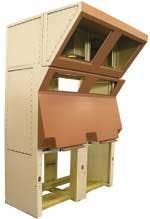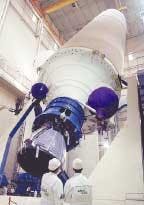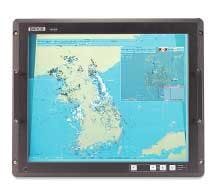Enabling technologies for military and aerospace electronics designers
Computer peripherals
Boeing picks Electrorack enclosures for in-air refueling program
Airplane designers at The Boeing Co. in Seattle needed enclosures for the computers aboard the Remote Aerial Refueling Operator (RARO) system on the 767 tanker transport. They found a solution with Electrorack, Anaheim, Calif.
The RARO II station allows the refueling-boom operator to sit at a console behind the cockpit and use 3D electronic goggles, cameras, and equipment to move the fuel boom near the receiving plane. Previously, boom operators had to lie face down at the rear of the aircraft. The electronic system improves operator comfort, night vision, and cockpit communication.
But those consoles demand custom enclosures featuring EMI/RFI shielding and lightweight aluminum construction, while still withstanding stringent Federal Aviation Administration requirements governing airborne electronics. Electrorack fit the bill.
"Electrorack's participation in the RARO program demonstrates our ability to collaborate and effectively work together with our customers to develop complex custom-enclosure solutions utilizing our engineering expertise and design tools," said Jack Frickel, Electrorack's executive vice president. For more information, see www.electrorack.com.
Sensors
Navy SPAWAR equips unmanned boat with Toshiba cameras
Engineers at netSCOPE Inc. and at SPAWAR (U.S. Space and Naval Warfare Systems Command), both in Charleston, S.C., were looking for a way to add _sensors to the Sea Fox unmanned surveillance boat. Their customer, the U.S. Navy, needed a watercraft that could speed through 8-foot seas at 45 knots to check for mines and bombs before the troops arrive.
They found a solution with Toshiba Security & Network Video, whose IK-WB11A wireless-network cameras can beam high-resolution video back to a base station as far away as one mile.
Designers mounted two remote-controlled cameras on each 16-foot, Zodiac-style inflatable boat. Mounted on poles facing forward and aft, the cameras provide a 115-degree color-video viewing area and audio. Using netSCOPE software, the system beams data to shore as the boat charges forward with a 200-horsepower engine.
The Office of Naval Research demonstrated the Sea Fox system May 26 at the Fleet Week event in New York.
"The Sea Fox camera system performed extremely well at Fleetweek and received high marks from attending members of the defense community," notes netSCOPE President Jeff Dodge. "We had only three days before Fleetweek to put the video system together for the Sea Fox, so it was only by the skill of our software programmers combined with the high quality and ease-of-use of the Toshiba cameras that made it possible."
For more information, see www.netcam.toshiba.com or www.netscopeinc.com.
Software
EADS uses Mentor Graphics to help design rocket wiring
Rocket scientists at EADS Launch Vehicles in Les Mureaux, France, needed a better way to design the complex wiring systems for the Ariane 5 Evolution rocket used to place satellites in orbit. They found a solution in Logical Cable, a software tool from Mentor Graphics of Wilsonville, Ore.
EADS engineers use Logical Cable to design two projects: the wiring systems for the cryogenic main deck (EPC) of the Ariane 5, and the deck of the new generation of M51 ballistic missiles.
The projects combine wire-harness designers from Logical Cable with computer-aided designs from the IBM Catia design software, enabling them to link various electromechanical systems, including ..power supply, functional electronics, and sensors that measure shock, acceleration, vibration, pressure, temperature, displacement, and pollution.
The stakes are high; sailors aboard French Deterrent Force ballistic-missile nuclear submarines will replace their current M45 launchers with the new M51 models by 2008.
The Ariane rocket program is extraordinarily complex. Each EADS Ariane 5 Evolution launcher has 202 wire harnesses, using a total of 4.6 miles of cabling. Logical Cable lets designers achieve two goals: reducing development costs and ensuring continual development, EADS says.
For more information, see www.mentor.com.
Displays
Lockheed Martin uses Barco displays for Navy consoles
Computer designers at Lockheed Martin Tactical Systems in Eagan, Minn., needed graphics cards and rugged displays for their AN/UYQ-70 shipboard console program.
They found components at Barco, of Kortrijk, Belgium. Lockheed will use $3 million of Barco's AVS 5100 graphics cards and RFD 251S rugged flat-panel displays. These orders follow earlier deliveries of high-performance graphics controllers, video-frame grabbers, and rugged displays for the same program.
Lockheed Martin engineers will use the parts in AN/UYQ-70 systems installed in submarines and Aegis-equipped surface ships. Specific system installations include the COTS (commercial-off-the-shelf) Refresh Program for Aegis-equipped Cruiser Conversion, the AN/UYQ-70 Command-and-Decision (C&D) console, and the Next-Generation Peripheral (NGP) and Ship Self-Defense System (SSDS).
The displays feature a 20.1-inch rugged flat screen that meets military shock, temperature, and vibration standards. The unit's front-bonded optical stack ensures condensation-free visualization, and the RFD 251S Naval displays are equipped with Automatic Phase Adjust technology for clear and sharp images.
The displays also feature Barco's LCD Flicker-Compensation solution, which enables Naval operators to view acoustic sonar images without flicker.
All displays and graphics generators will go to Lockheed Martin by this fall. Installation into the consoles will begin immediately after delivery.
For more information, see www.barco.com.
Board products
Aselsan powers fire-control computer with Radstone parts
Weapons designers at Aselsan Electronic Industry Inc. of Ankara, Turkey, were designing a vehicle-mounted stinger missile-firing platform and needed a fire-control system. They found one with Radstone Technology.
The new system delivers several advantages over the previous ManPortable Air Defense System (MANPADS) of the Turkish army. Able to fire as many as eight Stinger missiles — each traveling at Mach 2.2 — the Turkish armed forces' Pedestal Mounted Air Defense System (PMADS) delivers supersonic short-range air-defense capabilities for troops in exposed positions.
The system can mount on two vehicle platforms. The ZIPKIN will be based on a four-wheel Land Rover Defender, while the ATILGAN will be based on an armored/tracked M113A2 personnel carrier.
Radstone supplied a PowerPC2A Single Board Computer (SBC) for early development, then immediately upgraded to a PowerPC4A for production. PMADS comprises advanced subsystems, from thermal imaging to a laser rangefinder and the Fire-Control System.
"The Fire-Control System is actually the heart of the entire platform," explains Mustafa Kaval, Aselsan's project manager for the PMADS program. "At that time, our systems-design experience had been focused primarily on applications running on PCs. This was to be our first rugged project, and we wanted a vendor that could not only provide a complete solution for the FCS, but one that could support us through the development."
For more information, see www.radstone.com.
Sensors
Thales chooses Sofradir for stable sensors
Designers at Thales Land and Joint Systems needed an infrared detector for their new line of Gyrostabilized Electro Optical Turrets. They chose Scorpio, a low-pitch, TV-format IR detector from Sofradir in Chatenay-Malabry, France.
Gyrostabilized electro-optical turrets stabilize images despite being on board erratically moving craft, such as aircraft, combat vehicles, or ships. The stable pictures aid in detection, recognition, identification, localization, and designation.
Sofradir's Scorpio is a small, lightweight, 640-by-512-pixel mid-wave staring array IR detector, offering four times the performance of standard 320-by-256-pixel mid-wave infrared (MWIR) detectors, the company says. Sofradir plans to deliver 40 units of Scorpio to Thales during the next 12 months.
Buyers will use the new Thales turrets, called Agile (Airborne Gyrostabilized IR Light Equipment), for unmanned aerial vehicles (UAVs), light helicopters, surveillance airplanes, marine vessels, law enforcement, day and night surveillance, search-and-rescue missions, as well as other paramilitary and civilian sectors.
"The performance, size, and compatibility attributes of Sofradir's Scorpio allow us to provide a significant upgrade to Agile while keeping costs down and maintaining a performance lead," said Georges Creel, from Thales' PLM Electro-Optical Turrets in the Defence Optronics Strategic Business Line.
"Thales has already enjoyed successful collaboration with Sofradir — more than 6,000 of our Sophie handheld thermal-imaging goggles have already been sold in 45 countries. We have also worked together in high-end airborne applications, including laser-designation pods and, more recently, recce pods."
For more information, see www.sofradir.com.







